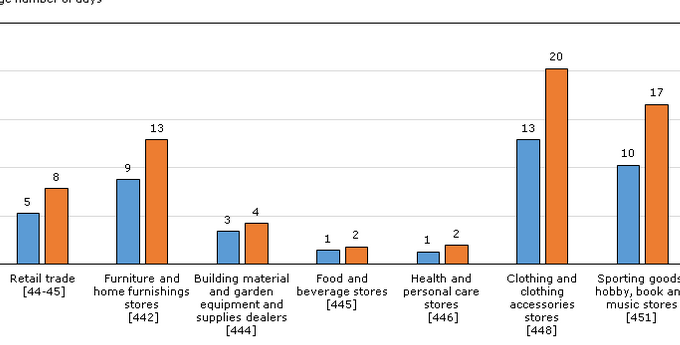|
Getting your Trinity Audio player ready...
|
E-commerce has become an integral part of the Canadian retail landscape, experiencing significant growth in recent years. With the advent of digital technologies and changing consumer preferences, the e-commerce sector has evolved rapidly, shaping the way Canadians shop, businesses operate, and the economy functions.

E-Commerce Growth in Canada
E-Commerce Boom in Canada
The e-commerce industry in Canada has witnessed a remarkable boom, driven by factors such as increasing internet penetration, widespread smartphone usage, and the convenience of online shopping. The COVID-19 pandemic further accelerated this growth as lockdowns and social distancing measures prompted more consumers to shift toward online shopping.
Mobile Shopping Revolution
One of the prominent trends in Canadian e-commerce is the rise of mobile shopping. Mobile devices have become the preferred method for browsing and purchasing products, leading businesses to optimize their websites and platforms for mobile compatibility.
Shift towards Personalization
E-commerce platforms are leveraging data analytics and artificial intelligence to personalize the shopping experience. Tailored recommendations, customized offers, and targeted marketing campaigns are enhancing customer engagement and satisfaction.
Rise of Direct-to-Consumer (DTC) Brands
DTC brands are disrupting traditional retail models by selling directly to consumers through their online platforms. This approach allows them to establish a stronger connection with customers and offer unique products without relying on intermediaries.
Sustainable and Ethical Shopping
Canadian consumers are increasingly conscious of sustainability and ethical practices. E-commerce businesses that prioritize eco-friendly products and transparent supply chains are resonating with this environmentally conscious audience.
Cross-Border Shopping and Global Marketplaces
The convenience of e-commerce has opened up opportunities for Canadians to shop from global marketplaces. Cross-border shopping has become a trend, with consumers exploring international products and brands.
Challenges and Opportunities
Despite the growth, the e-commerce landscape also presents challenges. Competition is fierce, and businesses need to focus on brand differentiation, customer service, and efficient logistics. Furthermore, cybersecurity and data privacy concerns are critical considerations as online transactions increase.
E-Commerce Trends in Specific Sectors
E-commerce trends are not uniform across all sectors. Fashion and beauty, electronics, home goods, and groceries each have their unique dynamics and challenges in the e-commerce space.
Government Initiatives and Digital Economy
The Canadian government recognizes the importance of the digital economy and has introduced initiatives to support e-commerce growth. Programs aimed at digital skills training and investment in technology infrastructure are helping businesses adapt to the changing landscape.
Building Customer Trust
Earning customer trust is paramount in the e-commerce realm. Businesses need to ensure secure payment gateways, transparent return policies, and excellent customer service to establish long-lasting relationships.
The Future of E-Commerce in Canada
The e-commerce growth trajectory is expected to continue, with further advancements in technology and changing consumer behaviours shaping the landscape. Virtual reality, augmented reality, and artificial intelligence are likely to redefine how consumers shop online.
Subscription Models
Subscription-based e-commerce models, offering curated products or services regularly, have gained popularity. This trend not only provides convenience to customers but also ensures recurring revenue for businesses.
Hyper-Personalization
Beyond basic personalization, hyper-personalization uses advanced data analytics to create tailored shopping experiences for individual consumers based on their preferences, behavior, and history.
Social Commerce
Social media platforms have become shopping hubs, allowing businesses to directly sell products through posts, stories, and advertisements, seamlessly integrating shopping into the social experience.
Cryptocurrency and Blockchain Integration
Some e-commerce platforms are starting to accept cryptocurrencies as payment methods, while blockchain technology is being used to enhance supply chain transparency and reduce fraud.
Conclusion
E-commerce growth in Canada is not just a trend but a transformative force that has reshaped the retail sector. As businesses adapt to changing consumer expectations and leverage technology, the e-commerce journey is poised to create exciting opportunities for innovation, expansion, and enhanced customer experiences. Embracing these trends will be key for businesses to thrive in the dynamic e-commerce ecosystem.
In summary, the e-commerce landscape in Canada is undergoing rapid evolution, driven by changing consumer preferences and technological advancements. Businesses that embrace these trends and offer seamless online shopping experiences are likely to thrive in the ever-growing digital marketplace.
